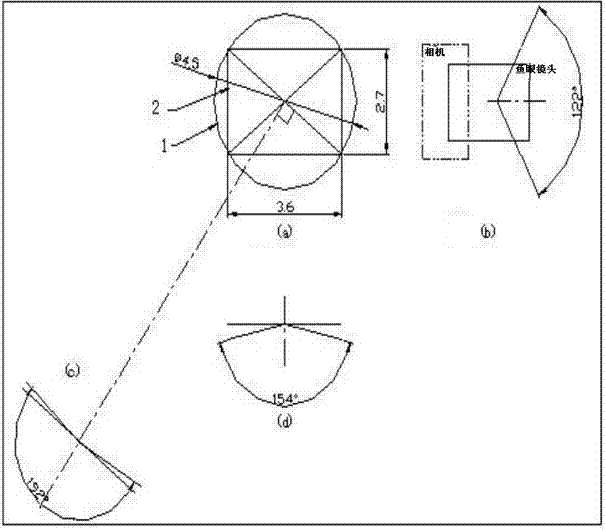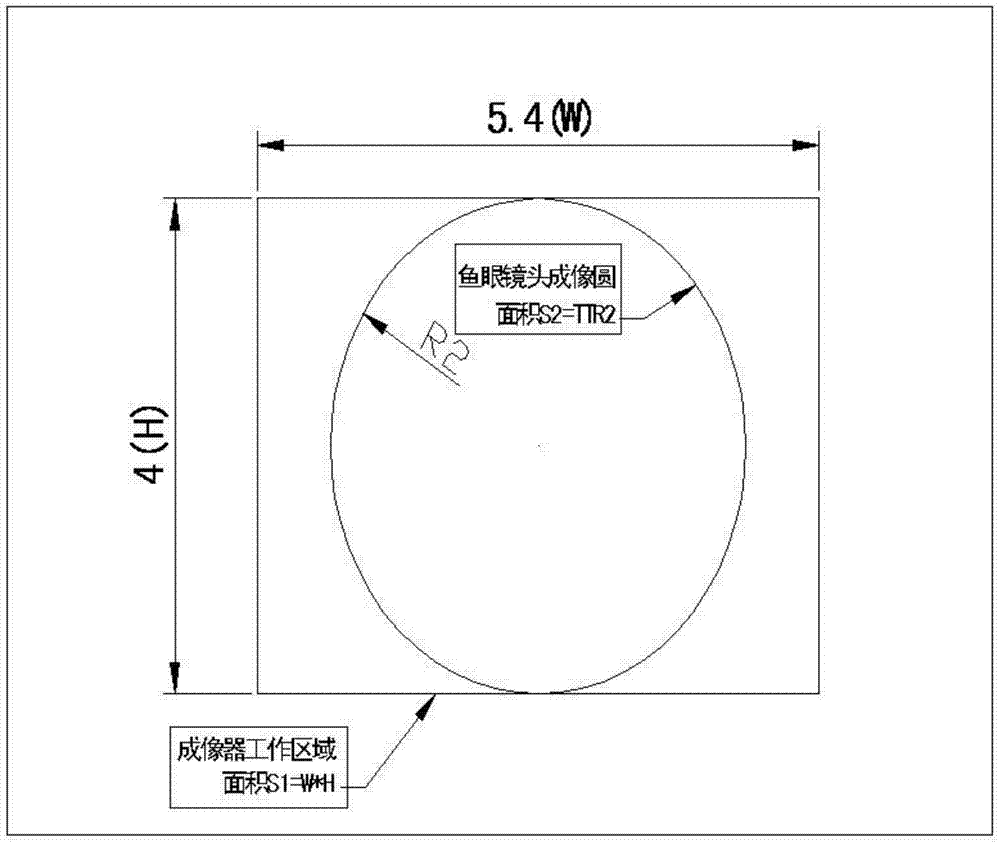Method and system for flattening a fisheye lens image
A fisheye lens and image technology, which is applied in the field of image processing, can solve the problems of large amount of calculation, increase the amount of data in the image, and cannot obtain good results, and achieve the effects of simple calculation method, improved utilization, and reduced load.
- Summary
- Abstract
- Description
- Claims
- Application Information
AI Technical Summary
Problems solved by technology
Method used
Image
Examples
Embodiment 1
[0061] A method for flattening a fisheye lens image is provided in this embodiment, comprising the following steps:
[0062] S1: Calculate the global flattening ratio S c , using the following formula
[0063]
[0064] where x 1 is the width of the effective imaging area, and f is the focal length of the fisheye lens;
[0065] S2: For the edge of the effective area of the imager, calculate the point coordinates before flattening, the formula is as follows:
[0066] (x b ,y b ) is the coordinates of points taken on the edge of the effective area, and k is the slope of the line connecting the point and the center of the coordinate system;
[0067] for the point (x b ,y b ) corresponds to the field of view before flattening,
[0068] h is the point (x b ,y b ) corresponds to the image height before flattening;
[0069]
[0070] (x e ,y e ) is (x b ,y b ) corresponding to the boundary point;
[0071] S3: connect the above calculated boundary points ...
Embodiment 2
[0077] In this embodiment, on the basis of Embodiment 1, after the step S4, a process of correcting systematic errors caused by machining errors is also included. In this way, system errors caused by errors in the production process of the equipment are corrected to improve the accuracy of the processed image.
[0078] Before the step S1, it also includes: configuring the imaging circle of the fisheye lens and the effective area of the imager so that the effective area of the imager is inscribed in the imaging circle of the fisheye lens. Since the effective area of the imager is inscribed in the imaging circle of the fisheye lens, the effective area of the imager can be fully utilized, and there is no waste of the imager. Compared with the setting method in the prior art, the Imager utilization. In addition, the position of the lens relative to the working area of the imager is adjusted by adding an adjustment structure of the lens relative to the imager, so that th...
Embodiment 3
[0081] A method for flattening a fisheye lens image is provided in this embodiment, wherein the image acquisition equipment used includes the following:
[0082] The image sensor is a camera imaging device, used for photoelectric conversion, which converts external optical signals into electrical signals, and the output electrical signals can be converted into signals that can be displayed on the display through the back-end processing circuit.
[0083] The field of view refers to the angle at which the lens can collect the most marginal light. According to the long and short sides of the imager, it is divided into horizontal field of view, vertical field of view and diagonal field of view.
[0084] The fisheye lens is a lens designed and processed according to the principle of bionics, imitating the fisheye structure, and the field of view can exceed 180 degrees.
[0085] The panoramic camera has a super large field of view. In order to meet the requirement of simultaneously ...
PUM
 Login to View More
Login to View More Abstract
Description
Claims
Application Information
 Login to View More
Login to View More - R&D
- Intellectual Property
- Life Sciences
- Materials
- Tech Scout
- Unparalleled Data Quality
- Higher Quality Content
- 60% Fewer Hallucinations
Browse by: Latest US Patents, China's latest patents, Technical Efficacy Thesaurus, Application Domain, Technology Topic, Popular Technical Reports.
© 2025 PatSnap. All rights reserved.Legal|Privacy policy|Modern Slavery Act Transparency Statement|Sitemap|About US| Contact US: help@patsnap.com



